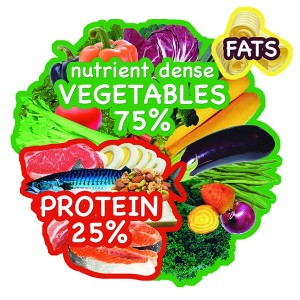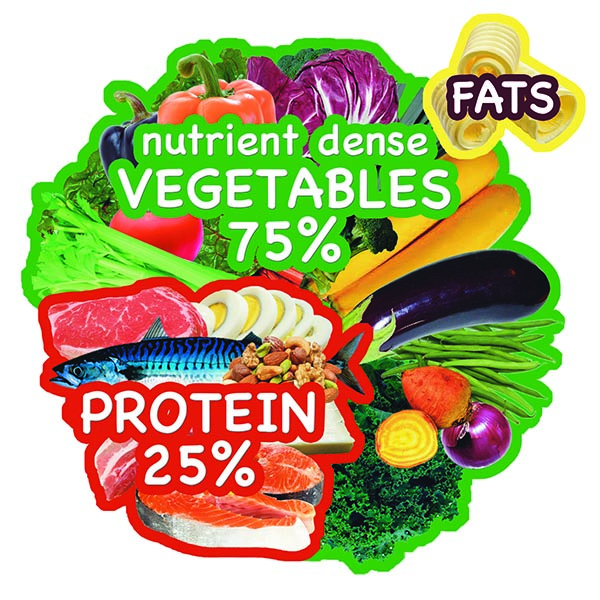When considering nutrition, both macronutrients and micronutrients come into play:
Our food needs to provide enough macronutrients to supply energy and building material for our body (hormones, proteins, enzymes, antibodies, membranes, etc.).
But in a society where getting enough calories in not an issue, it makes more sense to think in terms of micronutrients and seek the most micronutrient-rich food. In fact even in countries where there is a risk of undernutrition (that is, not enough macronutrients), there is an emerging problem of malnutrition (that is, lack of adequate micronutrients).
Macronutrients play an important role, but they must be selected wisely:
– Modern diets include too many carbohydrates. Carbs should not be eliminated from our diet, after all, vegetables provide a fair amount of carbs, but the carbs we eat must be useful: they must also contain micronutrients.
– Proteins portions are often diminished usually because of fear of fat. That is bad. We need proteins for the largest array of functions in our body: structure, hormones, enzymes, antibodies…
– Fats are feared because of the mistaken belief that fats make you fat and that fats are responsible for cardiovascular diseases. Don’t fear fats. Fats are needed for important functions in our body.
♦ ♦ ♦
 Our “ideal” plate is the result of years of clinical practice. It was designed empirically to provide enough micronutrients and macronutrients for most people.
Our “ideal” plate is the result of years of clinical practice. It was designed empirically to provide enough micronutrients and macronutrients for most people.
Although it is easier to illustrate this concept with volumes (as in the picture), the proportions are intended in weight of cooked ingredients.
• 1/4 Proteins
• 3/4 Micronutrient-rich vegetables
• Fats
• No sugars or starches or cereal
Proteins can be animal or vegetal. They include meat, fish, poultry, eggs, dairy, nuts and seeds.
It is assumed that vegetables are cooked or seasoned with fats. Protein generally comes with built-in fat. Fat is important: in the vegetable portion of your plate, half of the calories might come from fat (this is, however, not much in volume).
The exact quantity of fat for cooking vegetables is not important, as long as you use a reasonable amount. The window for “reasonable” is pretty wide: within the context of our micronutrient-rich diet, the body can deal with excess fat fairly easily, but it cannot cope with deficiency.
♦ ♦ ♦
On the ideal plate, the protein sets the agenda. This doesn’t diminish the importance of vegetables; it simply means that the quantity of vegetables is determined by the quantity of protein on the plate:
Whether you eat a 4-oz steak, a 6-oz fish fillet or a 3-egg omelet, make the vegetable portion of the meal about 3 times larger than the protein portion.
After you have finished your plate, if you want more food, make sure the next serving has the same 3 to 1 proportion of vegetables to proteins.
The quantity of protein required varies from person to person and also depends on the activity for the day. Younger or older people, or athletes, might need more than the general population. However, the “ideal” plate offers a good method for most people.
If you found this post interesting,
sign-up to be notified when there is a new post on our blog.


Love the ERFOE plate – especially the use of weight of food as a guide – much more meaningful / tangible than % of calories.
Hi Jim,
It is great to see you over here too. Given the hormonal effects of different foods, counting calories just does not make sense.
Thank you,
Dr. Mike
Do comments work for this theme